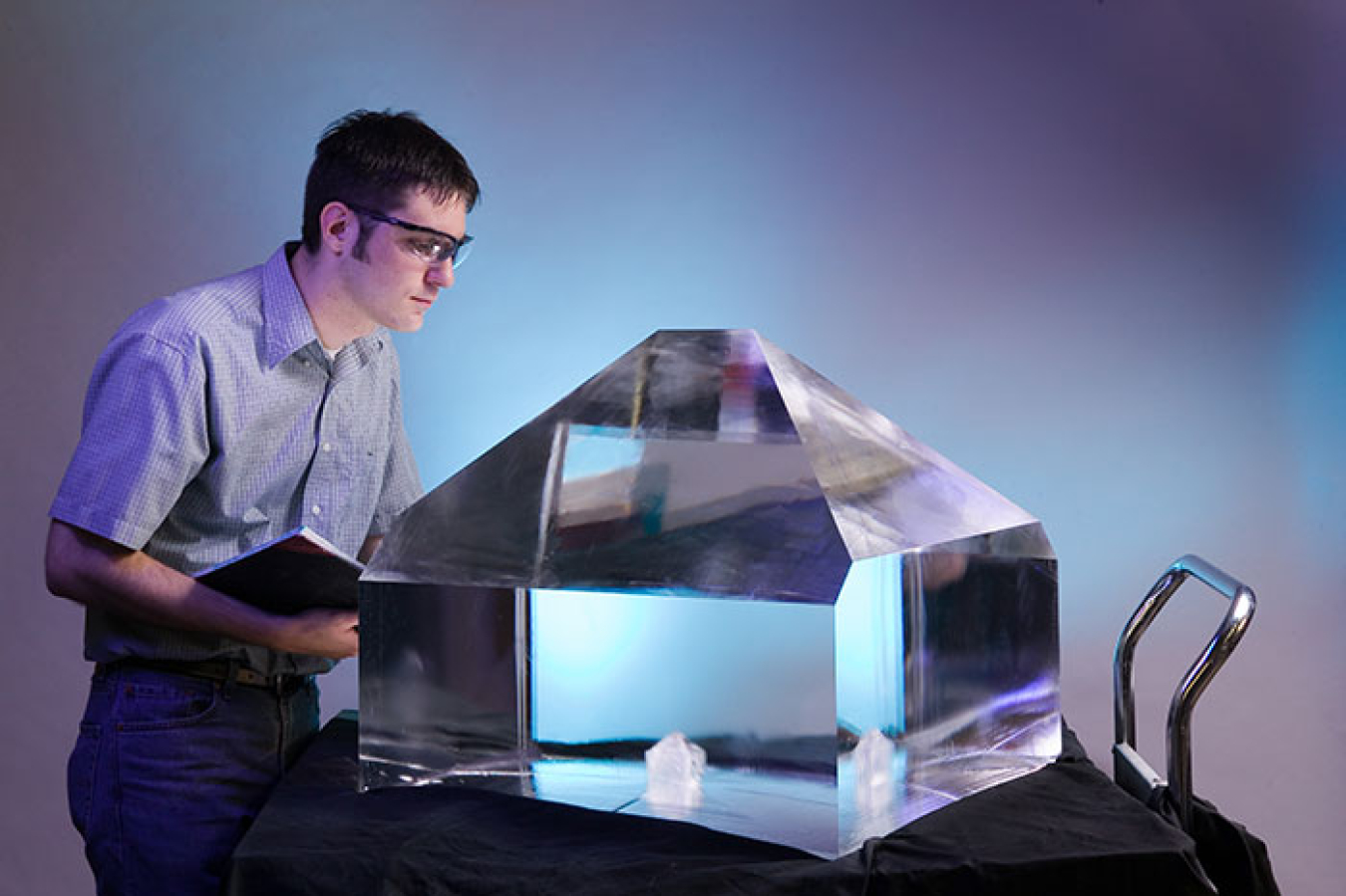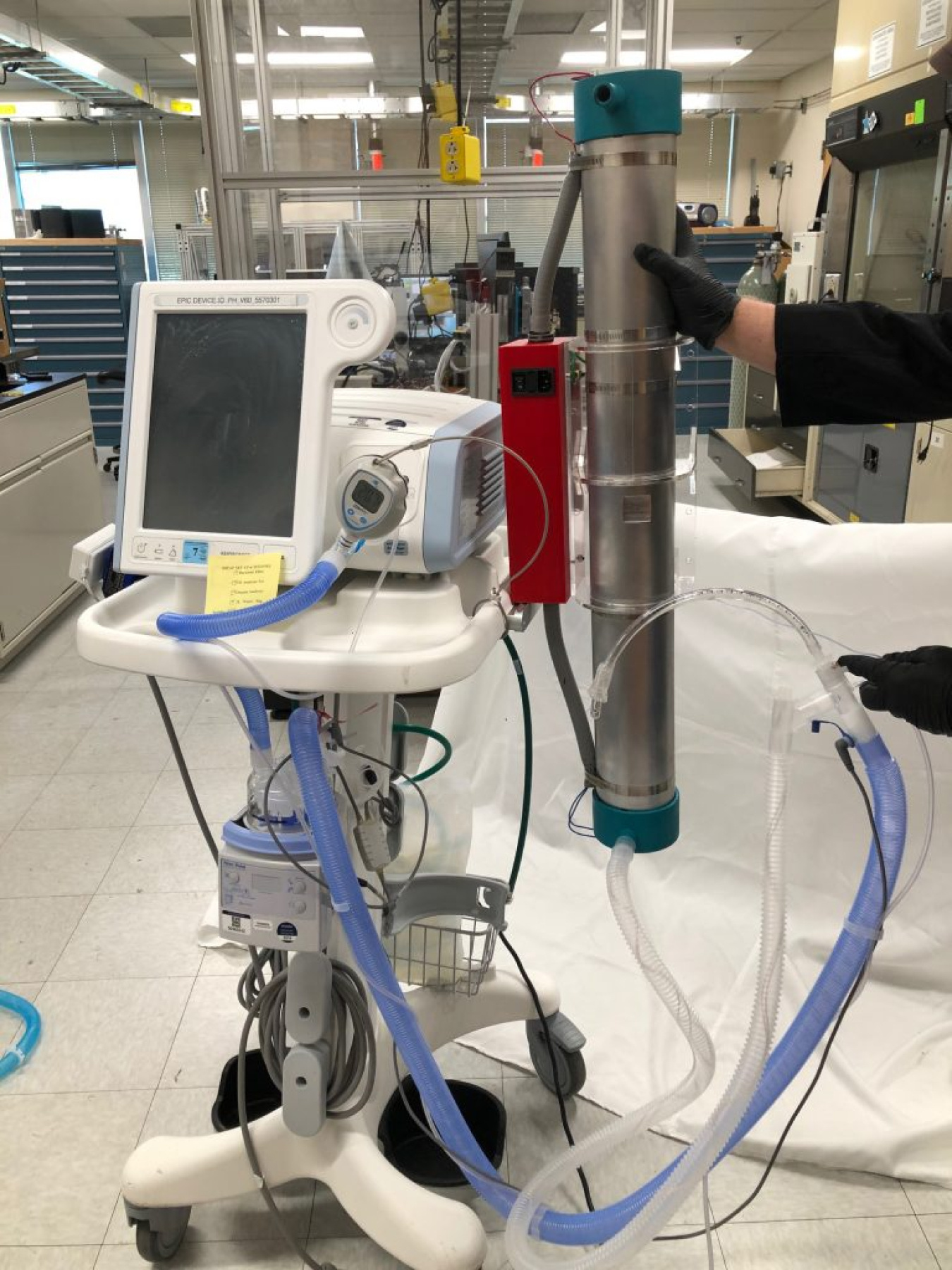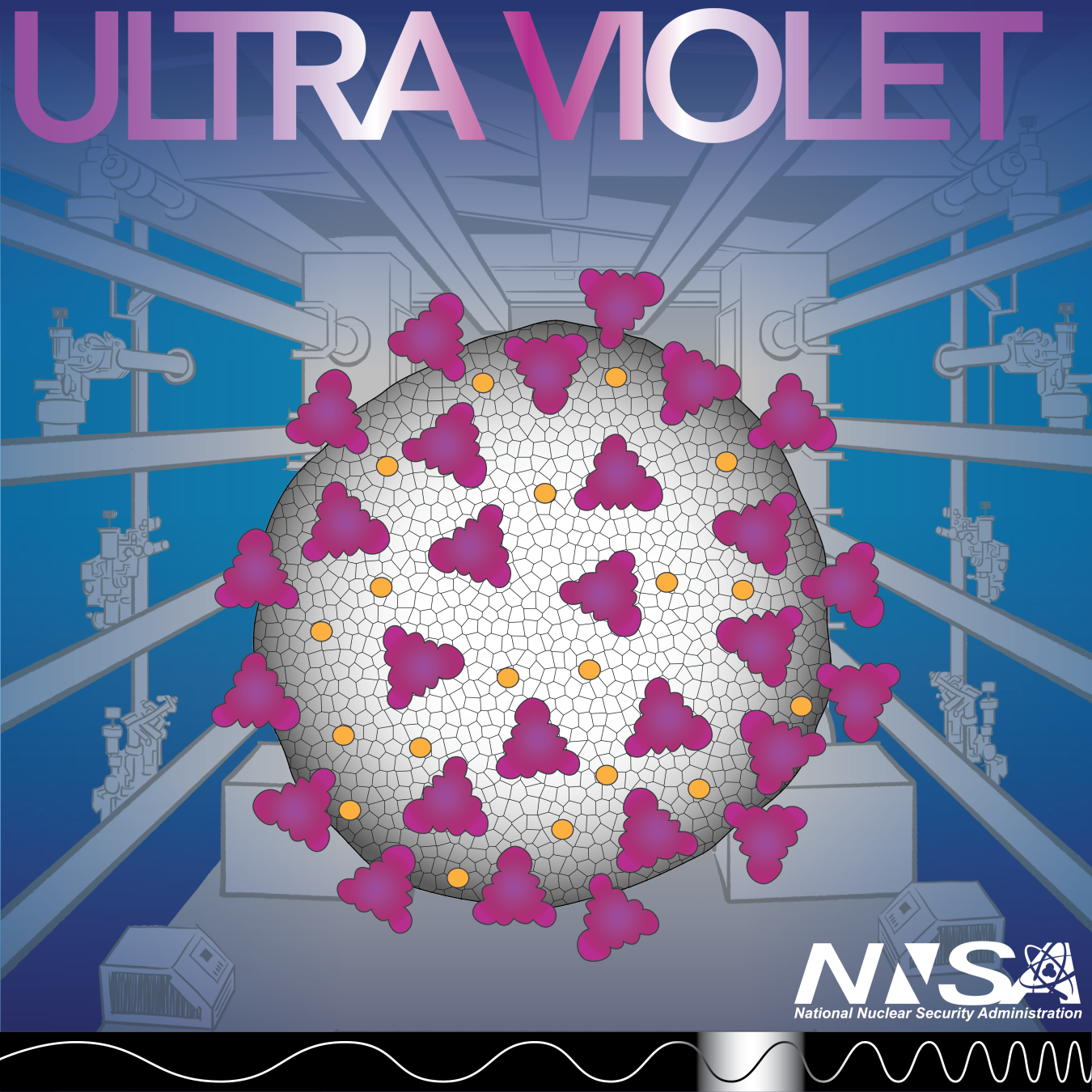Ultraviolet (UV) light is why we wear sunscreen and sunglasses – because overexposure damages living tissue. It also enables scientific applications for NNSA, including nuclear fusion and protection from viruses.
National Nuclear Security Administration
June 16, 2025Ultraviolet (UV) light is the reason we wear sunscreen and sunglasses – because overexposure damages living tissue. It’s also what makes black-light posters glow. But aside from killer tans and groovy wall art, ultraviolet light also enables scientific applications for NNSA, including nuclear fusion and protection from viruses.
A forerunner to fusion

You may have heard of the National Ignition Facility (NIF) at Lawrence Livermore National Laboratory. Its main mission is conducting experiments that support the nuclear stockpile. In 2022, NIF accomplished fusion ignition, a first for mankind and an incredible scientific milestone. LLNL scientists have since replicated and improved the results.
NIF is the size of three football fields and uses a complex system of 40,000 optics (lenses, mirrors, etc.) to amplify and direct 192 giant laser beams into the 32-foot diameter target chamber at a target assembly the size of a pencil eraser. The NIF laser beams begin as infrared light and remain that way for most of their journey. However, before entering the target chamber, optics made from large crystals convert the frequency to ultraviolet light, which performs better with the fusion targets.
Since 2009, NIF has conducted more than 4,500 “shots” through those crystals.
Defense against airborne pathogens

Once the COVID-19 pandemic began in 2020, NNSA and its national labs were tasked with researching technologies that could help contain the virus that causes it.
One of the innovations borne out of that terrible time was the Pathogen Management Kit from Sandia National Laboratories. It is a simple add-on for all kinds of ventilators that disinfects exhaled air to keep healthcare workers safe.
The kits consist of a UV light source in an aluminum tube. The tube amplifies the UV light and disables pathogens that pass through it. A UV light is better than a HEPA filter because it doesn’t clog. It also doesn’t create air resistance, so it can be retrofitted onto existing breathing machines.
Sandia produced 100 PMKs in under 30 days from concept to fully produced.
Research at NNSA spans the entire electromagnetic spectrum – take a look at findings at other frequencies and how they help further the missions of the Nuclear Security Enterprise.


